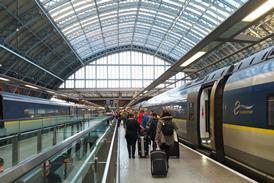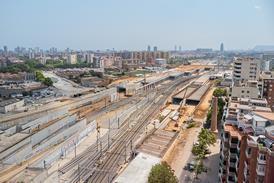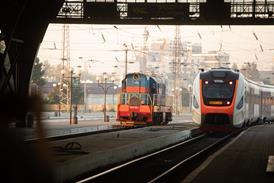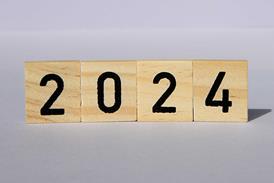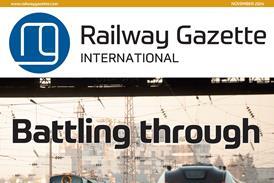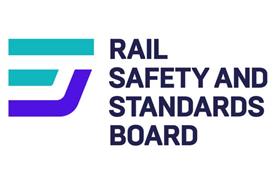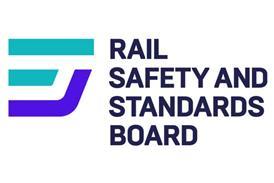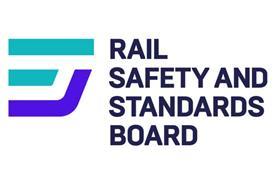INTRO: Although Terffs exist on paper and trains have operated since January, genuine customers bringing new business to rail are in short supply. Richard Hope explains what is going on and where it might all be leading
TRANSPORT Commissioner Neil Kinnock has made the transfer of freight from road to rail almost a personal crusade since publishing his 1996 white paper on revitalising the EU’s national railways. He complains forcefully about the way road hauliers have become international while the railways have made ’hardly any noticeable response to the effective removal of political and economic borders.’
Trans-European Rail Freight Freeways - very much a Kinnock initiative - have been pushed hard by his Transport Directorate (DG-VII), even though the Community of European Railways has expressed concerns about the attitude of Karel van Miert’s Competition Directorate (DG-IV) towards collaborative agreements necessary to create them.
Back in January, Kinnock told an Economist conference on Terffs in Brussels that if rail was to penetrate new international markets the two essential areas requiring attention were dependability and end-to-end speed. At 16 km/h, average door-to-door rail freight performance is ’inferior to the Roman postal service operating 2000 years ago’, he claimed. ’Railway undertakings must be willing to experiment, and to end the convention under which international freight is treated as an afterthought.’
But Terffs are not just a way ’to improve the rail freight product significantly at short notice, and without huge capital investment.’ Kinnock sees them as a means of addressing ’fundamental issues on a voluntary basis.’
What are Terffs?
These are worthy objectives at the policy level. If the Terff initiative persuades rail managers to sit down with colleagues and customers to identify and remove barriers to international freight service, without the delays implicit in EU directives and legislation, that can only be helpful.
But at the level where action - voluntary or otherwise - has to be taken there is still some uncertainty as to what Terffs are, and rather more about how they are working out in practice.
The idea is that railway infrastructure providers along a freight corridor form a consortium for the purpose of selling fast timetable paths at a commercial price to any organisation which is licensed to operate freight trains. Customers deal with a single office known as the One-Stop Shop.
This customer might be a single state railway company, such as SNCF Fret, a grouping of national railways like DB Cargo, SBB and FS, or a genuine open access operator with no corporate link to any European rail infrastructure provider. The Commission’s longer term objective is to get world class logistics operators such as CSX directly involved in the management of European rail freight business on a continental scale.
No queue at the counter
The first OSS, provided and staffed by CFL, opened its doors in Luxembourg last December. The first Terff train duly ran from Muizen yard near Antwerpen to Lyon on January 12 (RG 2.98 p69). Using one of 17 paths identified for use by customers of the Muizen - Gioia Tauro Terff, it was scheduled to cover 800 km at just over 70 km/h, including stops at Arlon, Luxembourg and Thionville for crew and/or locomotive changes. Wagons loaded at Antwerpen on January 11 thus reached Milano early on January 13 - but only after transfer at Lyon to a connecting non-Terff service.
This Terff has been extended north to Antwerpen port, and three of the 17 paths have been in regular use five days a week since January. Southbound, a train runs from Antwerpen to Sibelin yard at Lyon. Northbound, two separate trains are scheduled: from Sibelin to Bettembourg yard in Luxembourg, and from Bettembourg to Antwerpen. Wagons going through are transferred between trains at Bettembourg.
This Terff was established under an agreement signed on November 26 1997 by SNCB, CFL, FS and RFF - the small, nominally independent organisation set up to manage the infrastructure used by SNCF since 1997.
A supplementary agreement, signed by the four original partners and Renfe on February 27 and effective from the new timetable on May 24, extends the Terff paths from Lyon to Marseille and Fos, from Torino to Milano, and via Port Bou to Barcelona and Valencia. Links from Le Havre and Dunkerque are also in prospect.
The 17 paths in the current timetable cover a 2388 km route from Muizen to Genova and Gioia Tauro, near Reggio di Calabria at the southern tip of Italy. Though not actually in use, they are already available within Italy; the cabinet finally approved legislation for the EC91/440 directive on open access at the end of March.
Raymond Schanen at the Luxembourg OSS told us that until the relevant EC directives have been transposed, only existing railway companies have rights of access to Terff paths. He explained that the trains running since January are operated by a Groupe Internationale comprising the freight divisions of SNCB, CFL and SNCF.
So how is a Terff different to previous express freight services, such as the Bavaria Express linking Rotterdam and Antwerpen with München? A cynic might even suggest that the state railways were going through the motions of setting it up simply to keep DG-VII off their backs.
What the railways do claim is that establishing Terffs has provided more capacity and faster services. SNCF said on November 26, when the first Terff agreement was signed, that the Muizen - Gioia Tauro Terff provides 17 extra international paths saving around 20% in transit times, and augmenting capacity by some 2 million tonnes a year. Most paths cover sections, such as Muizen - Lyon; only two in each direction go all the way.
More than one stop
Traditionally, a deep sea shipping line wanting containers moved regularly, perhaps on leased wagons, between Antwerpen and Milano, would approach SNCB for a through tariff. This would normally be the sum of charges levied by each state railway, with no cost breakdown provided.
SNCB would obtain prices from the other railways, and lead any inter-railway negotiations if the initial total was considered uncompetitive. For the shipper, this is a one-stop shop even if the service has sometimes been painfully slow. Under the Terff regime, the shipper still approaches SNCB for a complete package including traction, and it is SNCB which deals with the Terff OSS in Luxembourg.
Should he have ambitions to become a licensed train operator, however, he seeks from the OSS a price for track access that excludes traction and other services such as wagon inspection. For these, he now has to approach each state railway operator in the absence (as yet) of any market for traction supply. This is far from one-stop shopping.
In short, until organisations outside the state railways seriously address the question of becoming open access operators, supplying and crewing their own traction and using the Terffs as a means of securing paths and transparent access prices, shippers may not see much benefit beyond extra paths on key routes and - perhaps - a reduction in transit times.
North - South Terffs
Potentially the most important Terffs to emerge so far are known collectively as the North - South group. Three overlapping routes are involved, and they opened for business on January 5.
The primary focus of the three North - South Terffs is shifting unitised loads between the North Sea ports and southern Germany, Italy and Austria. One route with four daily paths each way joins Rotterdam with Milano, Genova and Gioia Tauro via the Gotthard or Simplon tunnels. A parallel route (three paths) across the Brenner pass extends from Hamburg and Bremen to Brindisi. Cutting diagonally across them is a third ’route’ (six paths) from Rotterdam, Bremerhaven or Hamburg to Wien.
The partners offering access to the Terffs are the state railways involved in each route, acting in their capacity of infrastructure operators. Three OSS have been established, each responsible for one ’route’: Roma (and Firenze) sell Rotterdam - Gioia Tauro; Frankfurt sells Hamburg - Brindisi; and Wien sells Rotterdam - Wien. In view of the overlap between the routes, which effectively form a network, it might have been more customer friendly to have had a single OSS.
The North - South Terffs serve corridors where major container shipping companies such as Sea-Land have been very active in chartering block intermodal trains, notably through European Rail Shuttle (RG 6.97 p393). NDX, which has NS and DB as well as CSX in the partnership, claims to have schedules that are faster than the new Terff paths between Rotterdam and Milano. For whatever reason, no licensed railway has signed up to use the new paths.
The network dilemma
One important reason why intermodal shuttle trains operating out of Rotterdam are relatively fast and reliable is the absence of intermediate marshalling required by wagonload traffic, or even train sections. It is apparent that Terffs are designed to serve diverse traffic flows, and not just connect two end points. Herein lie the seeds of conflict.
According to Dr Wolfgang Friedrich of DB Cargo, FS insisted on Brindisi and Gioia Tauro being specified as end points for Terffs in the hope of capturing for its home ports more EU - Far East trade using the Suez Canal. FS would thus benefit from long hauls into German markets, instead of goods destined for northern Italy coming south from Rotterdam.
Obviously, very few containers would be consigned between Mediterranean and North Sea ports, yet the end-to-end timetable paths - according to Friedrich - allow insufficient time for marshalling trains en route.
Networking requires the exchange of wagons or train sections at points where two Terffs intersect. Likewise, there are branches and feeders which Terffs are tending to grow before they have really started. Together, these raise two issues.
First, the time taken to remarshall the through train is bound to be longer than if it had stopped only for a crew or locomotive change, or bypassed the yard completely. Secondly, the question of how long connections are held must arise, and how much delay results when a connection is missed?
London - Sopron challenge
Thus far, Terffs have been created by the state railways and their governments, and appear to be little more than a development of existing fast freight services under a new label.
This is not to say that the initiative is unwelcome; it has already exposed to public scrutiny and comment wide differences in track access charges, as Fig 1 demonstrates. But the absence of outside bodies from Terff planning is bound to limit innovative thinking.
The third Terff, due to start up towards the end of this year between London and Sopron, is totally different. Sopron is a marshalling yard and intermodal terminal just inside Hungary on the Gy

